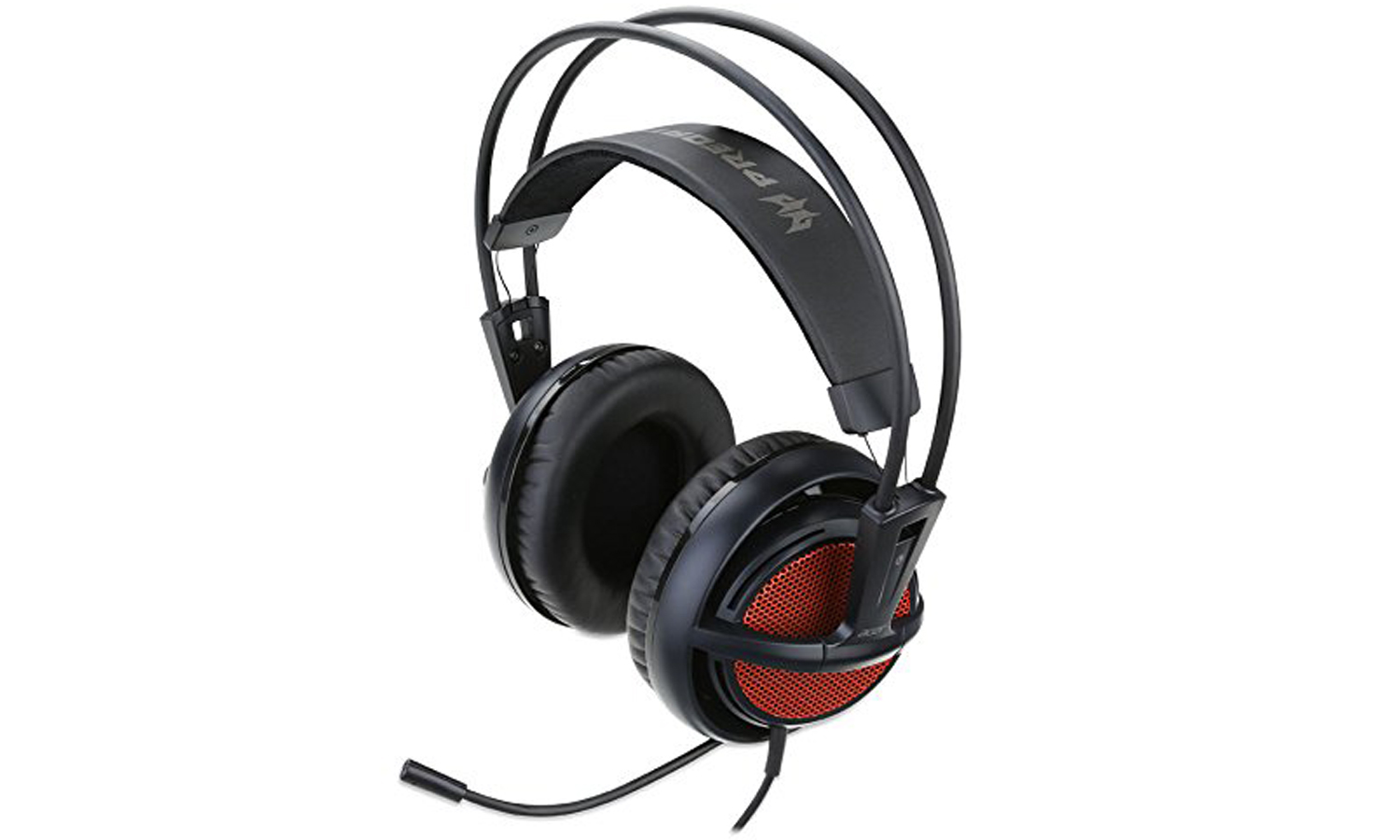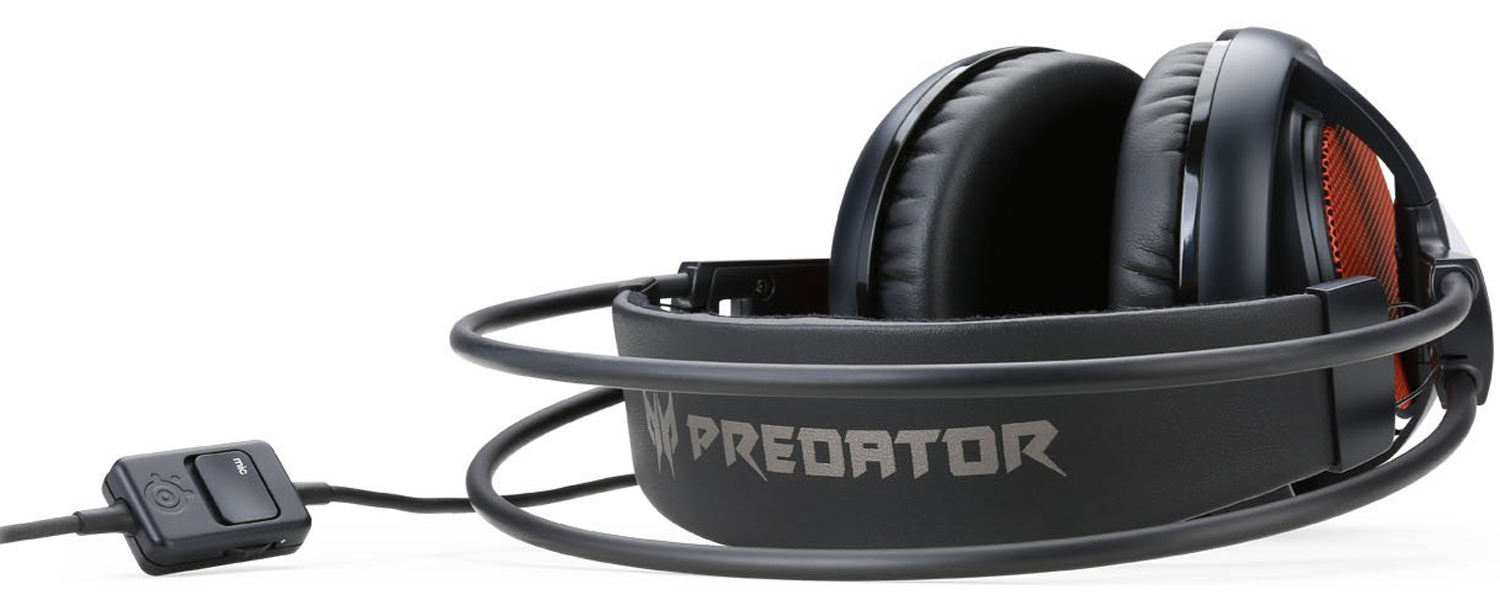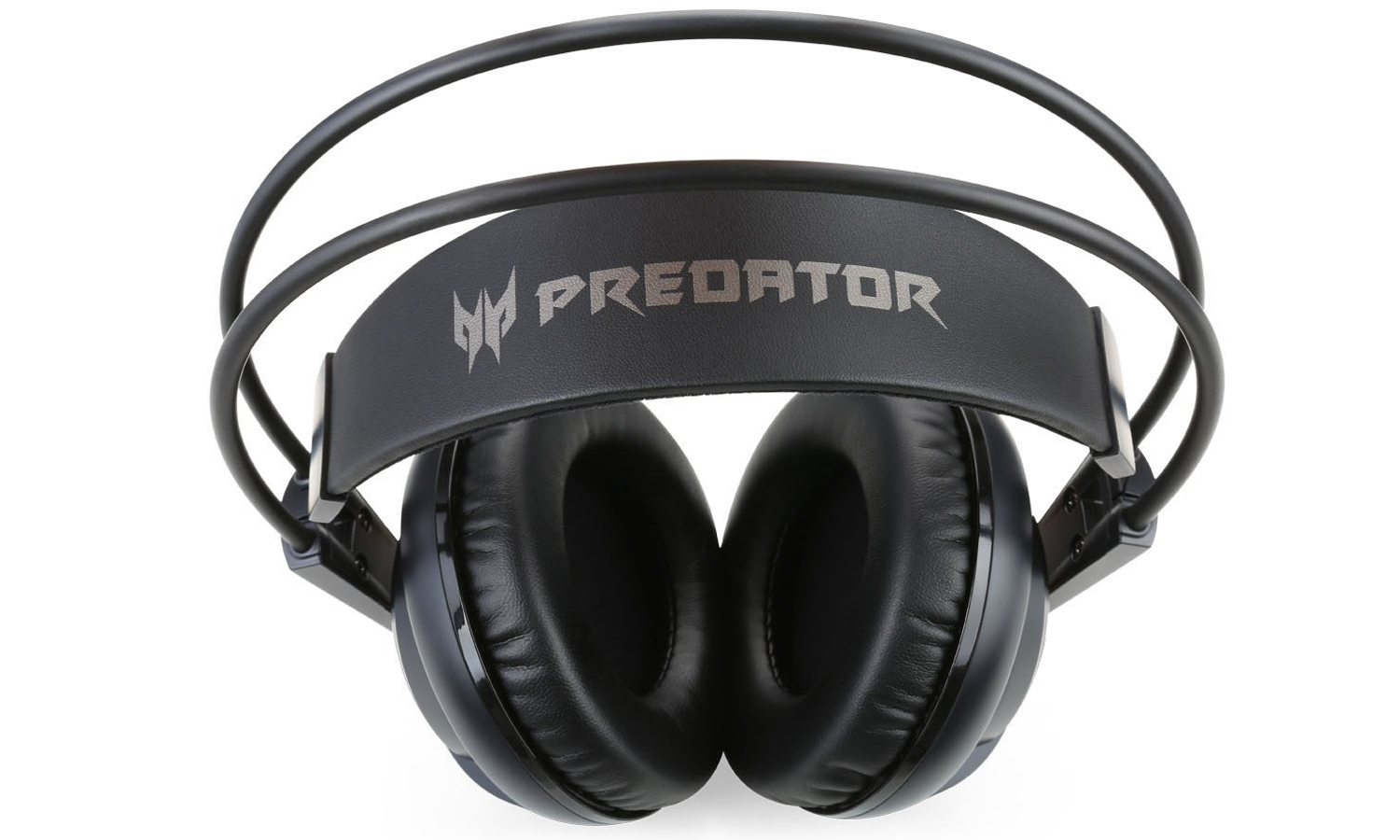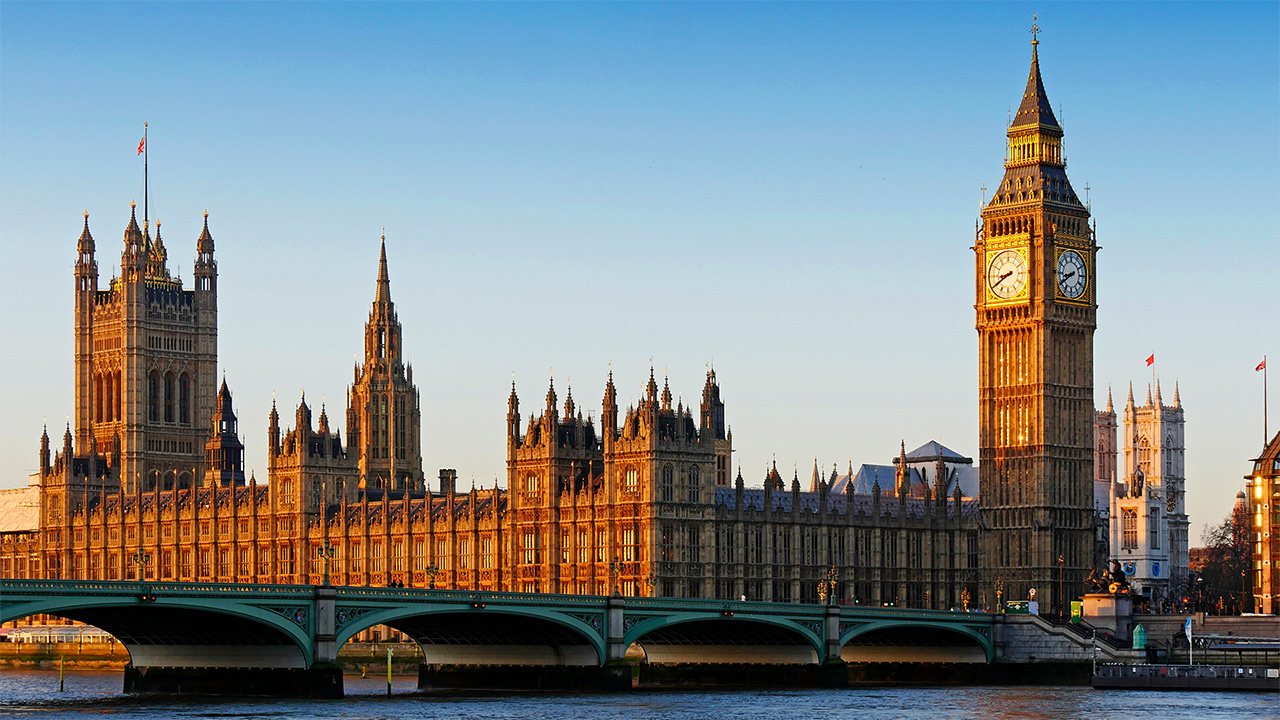Tom's Guide Verdict
The Acer Predator Gaming Headset sounds good, but if you can live without the branding, you can get better headsets for around the same price.
Pros
- +
Competent audio
- +
Retractable mic
Cons
- -
Hard to get a good fit
- -
Pricier than similar models
- -
Offers nothing over SteelSeries Siberia 200
Why you can trust Tom's Guide
I don't know what inspired Acer to slap its logo on a bunch of SteelSeries products and call them "Predator" peripherals, but it's not the worst idea a PC manufacturer has ever had. After all, SteelSeries makes great products — especially headsets. What could the harm be in repackaging a SteelSeries Siberia 200 and selling it under the Acer aegis?
Not much, it turns out — except getting overcharged for a budget headset that isn't the best SteelSeries peripheral by a wide margin. The Acer Predator Gaming Headset ($100, although you can get it for $70 at some outlets) sounds pretty good, but the signature SteelSeries elastic headband doesn't fit as well as it usually does, and if you can live without the Predator logo, you can get a more elegant accessory for the same price — or less.
Design
The Acer Predator headset is identical to the SteelSeries Siberia 200, so if you've ever used one of those, it'll be instantly familiar. The black body sports an elastic headband, two steel arches above it and two soft, over-the-ear cups. There's a retractable microphone in the left ear cup as well as a 3.5-millimeter audio cable with volume and mic controls.

There's nothing wrong with the Siberia 200, or, by extension, the Predator Headset; it's just a bit dated. In a world with the SteelSeries Arctis 3, which offers better sound quality and a more comfortable fit for $80, the Predator doesn't do much to distinguish itself.

Even the Predator Headset's best feature — the elastic headband — doesn't give quite the perfect fit I've come to expect from SteelSeries peripherals. Rather than just plunking it down on my head, I had to wear it pretty far forward and stretch it back before I got a comfortable fit. Even then, the ear cups didn't make a total seal around my ears, making the whole experience feel a little less immersive from the start.
Comfort
Aside from the difficulty of getting a perfect fit, the Predator Headset is extremely lightweight and comfortable. I found it easy to wear for hours at a time, even when I was wearing my glasses. The ear cups sit lightly on the ears, and the headband exerts almost no pressure whatsoever.
The performance was good across the board, although not as nuanced as what you'd get from newer headsets.
I handed the Predator off to a co-worker, who didn't have as much trouble adjusting the headband as I did. He noted, however, that the ear cups do not make a very good seal around the ears.
Get instant access to breaking news, the hottest reviews, great deals and helpful tips.
Gaming Performance
I ran through a variety of games with the Predator Headset, of both the cinematic and action-packed varieties, to see how well it held up under both immersive and competitive conditions. The performance was good across the board, although not as nuanced as what you'd get from newer headsets.
I gave the Predator Headset a long workout with The Witcher 3: Wild Hunt, and found it competent. The peripheral did an equally good job delivering audio, including long bouts of expository dialogue, pounding hoofbeats as my horse traveled overland, steel on leather as I drew my sword and the sweeping orchestral soundtrack in the background. The only real trouble is that voices sounded a little fuzzy and faraway, but the effect wasn't nearly strong enough to be distracting. I tuned it out within half an hour.

When I tried it with more competitive games, like Heroes of the Storm, I didn't notice anything at all about the sound — which is good, since it meant it became a seamless, immersive part of the game. Music, voices and sound effects all sounded clear and intelligible, which is particularly important when dealing with a game where sound cues can help you avoid attacks.
Music Performance
Few sub-$100 gaming headsets have anything more than passable music performance, but the Predator does. I listened to a variety of genres, including rock, punk, classical and folk, and the Predator made them all sound at least a little bit rich and nuanced. The whistle, accordion, guitar, bass and drums came through loud and clear in Flogging Molly's "The Hand Of John L. Sullivan," and every voice part sounded balanced in Handel's "Messiah."

The music quality isn't on a par with what you'd find in a dedicated audio headset, however. The sound is a little distant, and the vocals sometimes seem a little muted compared to some of the more powerful instruments. Furthermore, the headset is not very portable, and requires an adapter to run the mic and audio cables into a single jack, so it's not the best choice to take with you on a bus or plane. Still, if you listen to a lot of music at your gaming station, it'll get the job done.
Features
The Predator Headset has no software, meaning that its only features are physical. There's a mic mute button and a volume dial about halfway down the audio cable. It's not as convenient as ear cup-based controls, but it gets the job done.
Having a retractable microphone is also a nice touch. The mic itself is functional, albeit a little on the quiet side. My voice sounded a little flat, but still intelligible, meaning it's good enough for at least casual online play or Skype conversations.
Bottom Line
The SteelSeries Siberia 200 is a pretty decent headset, if a bit outdated; slapping a Predator logo on it doesn't do much to enhance it. On the other hand, it's not as though consumers are going out of their way to find Acer headsets; if you got a Predator Headset, you probably got it as a pack-in.

If you're wondering whether you need to hawk your new computer's accessory on eBay and trade up, the good news is that you don't. The Predator is a decent headset, taken on its own merits; it's only when compared to newer models that it really suffers. On the other hand, if you're in the market to buy a new headset and branding is not a concern, save yourself some trouble and go with the Arctis 3, which is superior in every way.
Credit: Acer

Marshall Honorof was a senior editor for Tom's Guide, overseeing the site's coverage of gaming hardware and software. He comes from a science writing background, having studied paleomammalogy, biological anthropology, and the history of science and technology. After hours, you can find him practicing taekwondo or doing deep dives on classic sci-fi.
-
Come on Acer, this is just sad. Get your garbage together and put it in a proper bin at least.Reply
